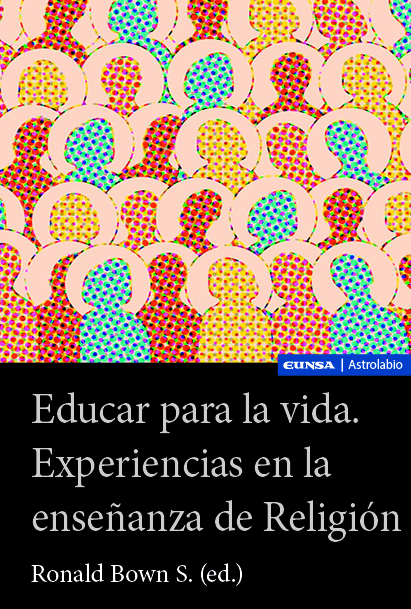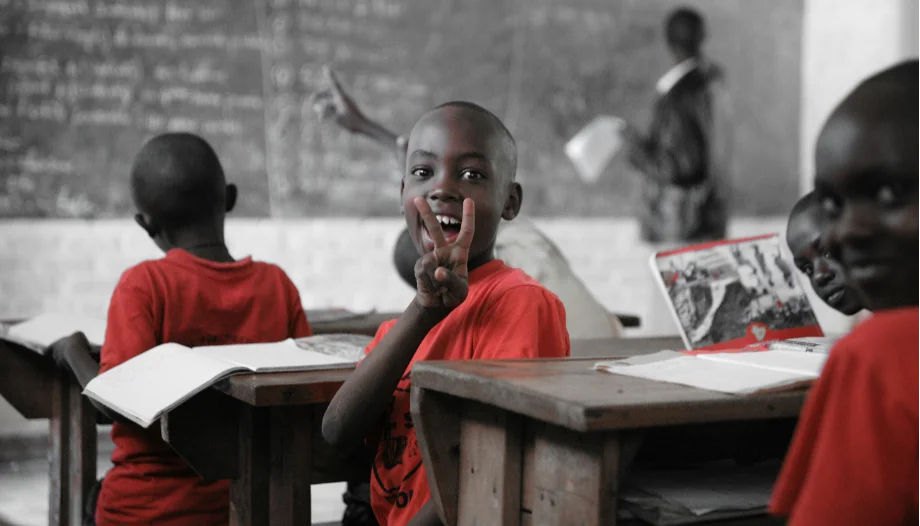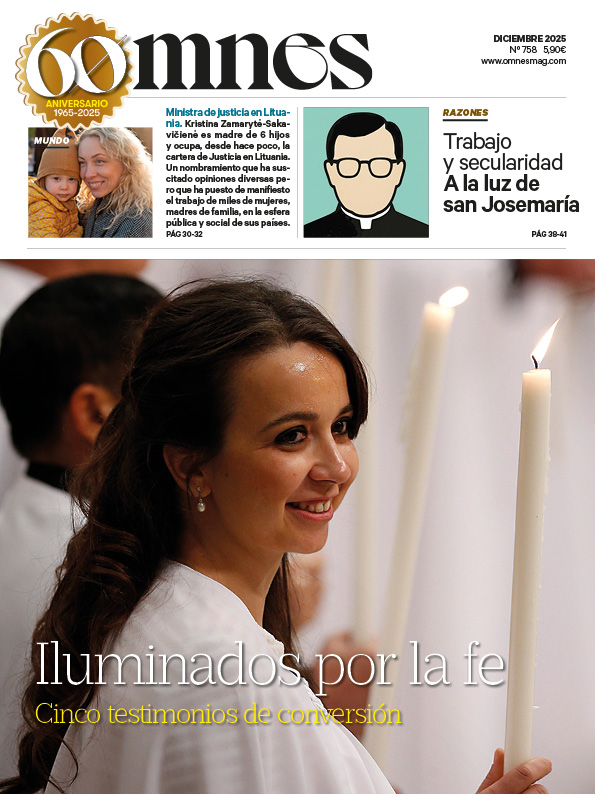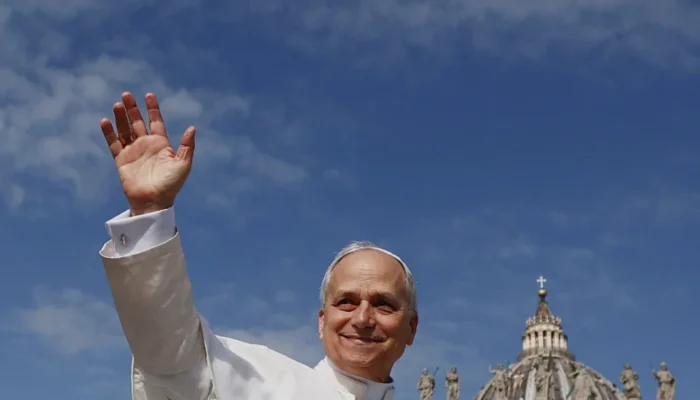"Educating for life"The book addresses a multitude of issues related to the teaching of the subject of Religion: from the approach to Sacred Scripture, to the challenges of classes in the pre-basic, elementary and middle school stages, including a multitude of pedagogical resources, as well as offering a proposal for students with special educational needs.
In the Introduction, I mention that I like to dedicate the last minutes of my classes to an activity that I call "Exit Questions" or, more recently: "High Impact" questions. It is a very simple activity, but one that the students are very attracted to: each student is asked to hand in, written on a piece of paper, a question about the class. It can be something they didn't quite understand, an idea they would like to explore in depth, a concept they are especially curious about, etc. These questions allow me to see what they really learned, what their topics of special interest are, and they are a very valuable input for the next class.
Every day, as I review these questions, I am surprised for several reasons: their eagerness to know our faith, the depth of their questioning, their wit and cultural restlessness. I share with you some of the questions I have been asked over the years: How do I know what God wants from me? Can people of other religions go to Heaven? What was there before God? How is original sin evil if God creates all things? Why is choosing evil not true freedom? What can I tell an atheist to convert?
Based on these questions and my experience in the classroom, I dare to affirm that young people like to learn, are interested in knowing more about our faith, want to understand the teachings of the Church in greater depth, are eager to give meaning to their lives and are keenly interested in having a personal encounter with Christ.
Classroom activities
Professor Ángeles Cabido explores the diversity of activities for the secondary classroom: analyzing biblical quotations; consulting what the Catechism or YouCat says about what has been studied;
Santiago Baraona, in the chapter on student participation, recalls that "when I teach the Fundamental Theology course to 17-year-old students, in the first class I ask each one, on an interactive participation platform (Socrative or Mentimeter, for example), to answer the following question: If you had the opportunity to ask a question to someone who could answer them all, what question would you ask them? Students have a few minutes to think and answer. If they want to, they can do so anonymously, with the goal being that it is indeed a reflection of a question that truly interests them. We then analyze everyone's answers and comment on them.
Perennial issues
Almost all of the questions over many years now - think of a total of about 1,200 students - are more or less elaborate variations of these:
- What is the reason that God created us and created us the way he did (as intelligent beings in his image and likeness)?
- Why does suffering exist?
- What should I do in my life?
- Does God exist?
- What happens to me after death? What happens to me when I die?
- How did it all start?
- What does the perfect man look like and how can I get closer to being like him?
What is surprising is the coincidence and convergence of these questions. The truth is that it should not be a surprise: man has always been looking for an answer to these piercing questions. For the religion class to be meaningful for the adolescent student, it seems to me that it must start from a concern that he has. We cannot give answers if there are no questions beforehand".
Christ in the center
María José Urenda, writes a chapter on the centrality of Christ, deepening on the true focus and center of the classes. She proposes a reflection on the meaning of the teaching of the Catholic religion, placing at the center the Person of Christ as the foundation, content and goal to be achieved. It is pointed out that the teaching of the Catholic religion should not be limited to transmitting knowledge or preparing for exams, but implies guiding and accompanying students to know, love and follow Christ, which is only possible if the teacher has made Him the center of his or her life.
The vocation of the religion teacher, and his or her pedagogical practice, is intimately linked to his or her personal testimony of faith, since "no one gives what he does not have".. This chapter stresses that Christ is not only a historical figure, but God made Man himself, whose life and teachings mark a before and after in the history of humanity. For this reason, it insists that the ultimate goal of the Religion class is to foster a personal encounter with Christ, so that He may transform the life of each of its students."
Religion before the age of 6
Francisca Ruiz and Bernardita Domínguez co-wrote the chapter dedicated to the challenges of Religion classes in Pre Basic. It is a chapter with numerous activities explained and accompanied by QR links to observe the results of the activity. For example, to explain the Calm Storm, a boat of about 70 cm. is made with eva rubber or cardboard and some dolls made of cloth representing Jesus and the apostles, we bring the story to life.
Each child holds a blue handkerchief in his hand to participate in the story according to whether the sea is calm or with big waves. When the storm hits the boat, the children shake their handkerchiefs vigorously. When Jesus raises his arms and says: "Calm the sea, calm the wind", we stop moving the boat and the children, their handkerchiefs. "I am with you, do not be afraid!" And we close by commenting how powerful Jesus is that even the sea and the wind obey him.
Other activities that can be highlighted from this chapter:
Treasure: We place a mirror inside a pretty box lined with some shiny paper. We say quietly, "Inside this box is what God loves most of all creation. He made it very special and unique. I will approach each one of you to see it. And very important, don't tell your partner so he can discover it too." One at a time, each child is invited to see what is inside that box. When they open it and see their reflection, the child gets excited and smiles. It is a very special and important moment in becoming aware of God's love for each one.
Treasure Chest: the first class of the year we enter the room with a chest (gold lined box): "Here inside I bring the greatest treasure we can have, Someone who loves us very much. Who will it be?". The chest is opened and our stuffed Jesus appears. During the year, we reinforce the idea that Jesus is our treasure and we should take care of him.
The multiplication of the loaves: in the story of this miracle we highlight the presence of a child who wanted to share everything he had. We use a cardboard plate with loaves and fishes folded as a fan, so that at first sight only 5 loaves and 2 fishes can be seen, but when stretched out, many more will be seen, evidencing the multiplication of the loaves. You can also make the representation using a small basket with the seven elements and change it at the moment of the miracle for a large basket with loaves and fish to share among all the children (we recommend using candies or cookies in the shape of fish and loaves).
An effective pedagogy for primary and secondary schools
It is clear then that each chapter tries to be as practical as possible. A couple of final examples: Carolina Martinez explains how to approach Sacred Scripture. Reading the Bible, our starting point, gives concrete advice on how to approach Sacred Scripture, both for the Old and New Testaments. And Catalina Tapia and Verónica García offer pedagogical resources that put into practice different thinking routines that can be useful for our classes:
I. Visible thinking routines to present and explore:
Seeing - Thinking - Wondering:
-To see: to observe with attention a sacred image (painting, photograph, graphic) that has important elements that offer different levels of explanation. It is important that it is described without interpretation.
-Thinking: Reflect on what the image makes us think about, give an interpretation, then argue through evidence my reflection.
-Questioning: To formulate questions that are broader, that go beyond interpretation, to challenge curiosity.
The next step is to share with a partner.
Focus
The objective of this routine is to have a blinded portion of a sacred image, which calls for the interpretation of the entire plane, invites to look closely and make interpretations, then a new visual interpretation is presented and you are asked to look closely and reevaluate your initial interpretation. This process allows for a dynamic flexibilization of thought, showing that a partial view can always lead to a biased interpretation of the subject.
II. Visible thinking routines for Thinking-Questioning-Exploring:
1. CSI: Color, Symbol, Image: capturing the essence through metaphors. Using a color, a symbol and an image to represent the ideas they have identified.
2. Sentence-Phrase-Word: Routine that works with a sacred text, to summarize and extract the main ideas, contexts and knowledge. It seeks to unveil what the reader found important.
- Prayer: Captures the central idea of the sacred text.
- Phrase: That has captured your attention by provoking an emotion.
- Word: Choose the word that most closely relates to the central idea and evokes a reflection.
In conclusion, reading "Educating for Life. Experiences in teaching Religion" is of real help to teachers of Religion, the subject most important of all.
Educating for Life: Experiences in Religion Teaching

Professor of Religion, Tabancura School.







